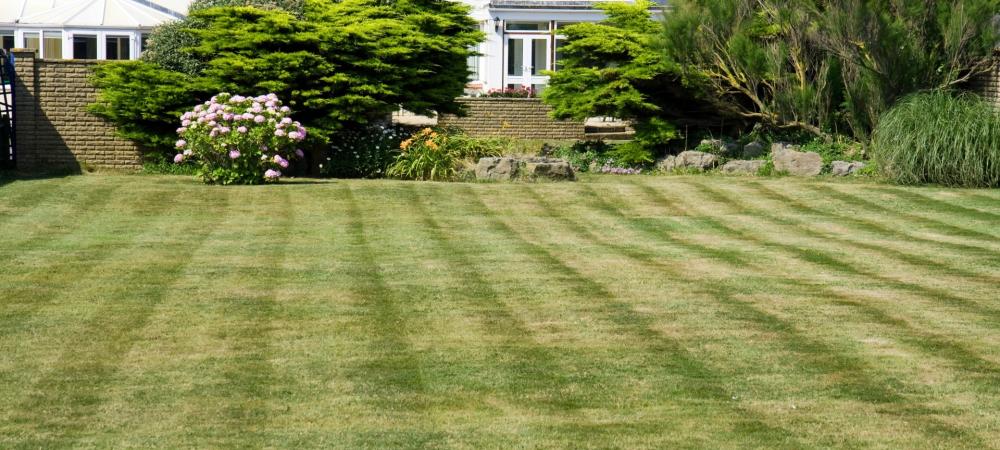Prepare Your Charleston Lawn For Spring

As winter comes to an end and the warmer weather approaches, it's time to start thinking about preparing your Charleston lawn for spring. After months of colder temperatures and potentially harsh weather conditions, your lawn may be in need of some TLC to get it ready for the growing season ahead. From removing debris and thatch to aerating and fertilizing, there are a number of tasks that can help to promote healthy growth and a lush, green lawn. By taking the time to properly prepare your yard for spring, you can set the stage for a vibrant and thriving outdoor space that you can enjoy throughout the warmer months. Whether you're a seasoned gardener or new to lawn care, there are steps that you can take to ensure that your lawn care in Charleston is in top shape for the spring season.
First Mow of The Season
The first mow of the season is an important task in maintaining a healthy lawn. Before starting, ensure that the air temperature is above 65 F and the grass is beginning to grow. For Bermuda grass, it is recommended to scalp it to ½” the first time you mow in the spring. This will help remove dead grass and promote new growth.
In preparation for the first mow, it is crucial to sharpen your mower blades to ensure a clean cut. This will help prevent tearing and damaging the grass. Additionally, set the mower deck height to the highest possible setting for your grass type. This will encourage deeper root growth and help the grass withstand heat and drought stress.
By following these steps, you can ensure that the first mow of the season sets the stage for a healthy, lush lawn. Remember to only mow when the grass is dry to prevent tearing and to avoid cutting more than one-third of the grass blade at a time to prevent stress on the lawn. Following these guidelines will help maintain a vibrant and thriving lawn throughout the growing season.
Clean Up Winter Debris on Your Lawn
As the seasons change, it's important to give your yard some attention and care. Begin by removing any debris such as fallen leaves, branches, and dead plants from your yard. This will allow you to assess its condition and identify any areas that may need special attention. As the weather warms up, it's time to start preparing for warm-season grass care.
Once you've cleared away the debris, take the time to inspect your lawn for any areas that may need special attention. Look for any bare spots, thinning areas, or signs of disease or pests. This will help you determine what steps need to be taken to address these issues and promote healthy growth.
Apply a Pre-Emergent Herbicide
To maintain a healthy and weed-free lawn and garden beds, it is crucial to apply a pre-emergent herbicide at the right time. The best times to apply the herbicide are February-March and again in August-October when the soil temperature reaches 55 degrees. It is important to time the application carefully to prevent weeds from sprouting and taking root in your lawn.
Using a pre-emergent herbicide is effective in stopping weeds before they even start growing. By applying the herbicide before the weeds begin to sprout, you can effectively control weed growth and ensure a green and healthy lawn. This type of herbicide works by creating a barrier in the soil that prevents the germination of weed seeds, ultimately reducing the need for post-emergent weed control.
By following this schedule and utilizing a pre-emergent herbicide, your lawn and garden beds can stay in top condition, free from unwanted weeds. Proper timing and application of the pre-emergent herbicide are essential for successful weed prevention and overall lawn care.
Liquid Aeration
Liquid aeration is an alternative method to traditional mechanical aeration that can help improve the health of your Charleston lawn. Unlike core aeration, which involves removing small plugs of soil from the ground, liquid aeration uses a specially formulated liquid solution that helps to break up compacted soil and improve nutrient absorption.
Liquid aeration offers several benefits for your lawn. First, it helps to improve soil structure by loosening compacted soil, allowing roots to penetrate deeper and access nutrients and water more easily. This promotes healthier root growth and overall lawn health.
Second, liquid aeration helps to increase oxygen levels in the soil. Oxygen is essential for root respiration and nutrient uptake. By improving oxygen levels, liquid aeration can enhance the overall health and vitality of your grass.
Fertilize
Properly fertilizing your lawn depends on the type of grass and the season. For warm-season grasses, such as Bermuda or Zoysia, fertilize in late Spring with a nitrogen-only fertilizer. Apply 1 pound of nitrogen per 1,000 square feet.
It is important to evenly spread the fertilizer using a spreader and then lightly water the lawn to help the fertilizer penetrate the soil.
By following these guidelines for timing, frequency, and proper application, you can help ensure your lawn receives the appropriate nutrients for healthy growth and appearance.